Nina Papathanasopoulou
August 26, 2022
The Ancient Worlds, Modern Communities initiative (AnWoMoCo), launched by the SCS in 2019 as the Classics Everywhere initiative, supports projects that seek to engage broader publics — individuals, groups, and communities — in critical discussion of and creative expression related to the ancient Mediterranean, the global reception of Greek and Roman culture, and the history of teaching and scholarship in the field of classical studies. As part of this initiative, the SCS has funded 142 projects, ranging from school programming to reading groups, prison programs, public talks, digital projects, and collaborations with artists in theater, opera, music, dance, and the visual arts. To date, it has funded projects in 29 states and 11 countries, including Canada, the U.K., Italy, Greece, Spain, Belgium, Ghana, Puerto Rico, Argentina, and India.
This post discusses four AnWoMoCo-funded projects taking place in a variety of locations and dealing with archaeology, philology, pedagogy, and film making: an archaeology project related to the olive oil trade in the south of Spain; the creation of a student commentary on Rusticatio Mexicana, a Latin poem by the 18th-century Guatemalan writer Rafael Landívar; a virtual lecture series called All About the Ancient World; and a short film produced in Greece based on the fragments of Euripides’ tragedy Phaethon.
The Marsal Collection of potter stamps: Integrating Andalusian rural communities into archaeological work
In an effort to provide high school students with the opportunity to engage in archaeological work while highlighting the importance of olive oil trade in Spain from Roman times to today, Ivan González Tobar, a Ph.D. graduate in Archaeology from the Université Paul Valéry in Montpellier, France, used AnWoMoCo funding to collaborate with Juan Moros Diaz, Ph.D. graduate in Epigraphy from the University of Barcelona, and a number of high school teachers on a project involving the Marsal Collection of potter stamps in the region of Andalusia, Spain. Tobar and his team recruited 45 Latin students to work on this collection for a week at the Museo Ibero in the city of Jaén. The Marsal Collection is an unpublished collection of about 3,000 stamps on olive oil amphoras from the Roman period. The collection takes its name from engineer Ricardo Marsal, who gathered these stamps during the 20th century. As Tobar explains, Marsal purchased these stamps from farmers who collected them in the fields all over the Guadalquivir Valley. These stamps provide the names of the very potters who produced Roman amphoras between the 1st and 3rd centuries CE, and so the collection is, in Tobar’s words, “a living vestige of the trade and export of Baetican olive oil, a product still at the heart of the Andalusian economy today.”
The city of Jaén is today one of the most important olive oil producers in Spain. The students who participated in the project were all not only from the region, but also members of families who work in olive oil production. During their week at the Museo Ibero, students studied the history of the oil trade and the production of ceramic vessels in Roman times. They received training in how to study and read potter stamps, how to record them, give them code numbers, photograph them, and make silicone casts out of them.
According to Tobar, the project has been particularly successful. He writes:
We have been able to demonstrate that it is possible to fully integrate teenagers in a research activity at a level of involvement very close to that of a novice researcher. They were an integral part of the whole process and, as such, they developed their own independent outlook of Roman history. For them, as we have received feedback from their teachers, it has been an exemplary experience on several levels: they felt a part of a real research activity where they approached the profession of archaeologist and museum owner. This close experience with ancient material enabled them to learn to value it and know how to protect it.
Tobar and his team have plans to publish the stamp collection. They are in the process of talking to university presses.
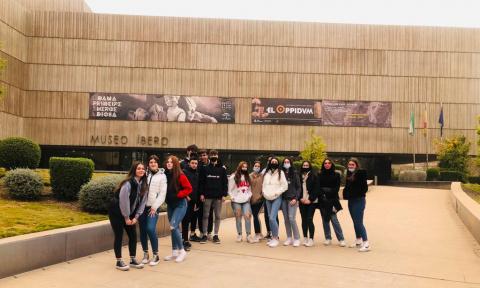
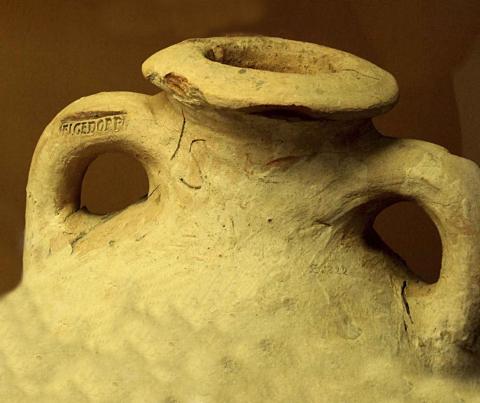
A student commentary on Rafael Landívar’s Rusticatio Mexicana
In collaboration with her fellow graduate students from the Department of Classical and Near Eastern Studies at the University of Wisconsin-Madison, Marina Cavichiolo Grochocki created a research group to develop a student commentary for Rafael Landívar’s Rusticatio Mexicana, a 1782 Latin poem describing Guatemala’s natural environment and life in the countryside. Intended for intermediate-level students of Latin, the commentary will help students appreciate the poem’s language while studying the geography, traditions, and history of Guatemala.
With funding from AnWoMoCo, the research group met regularly during academic year 2021–2022 and was able to produce a commentary on the prologue, the section titled Monitum (Warning), and select passages that the group considered interesting: a description of the eruption of El Jorullo and the people’s reaction to it; passages on mining and the life of miners; and descriptions of Guatemala’s animal life, with an emphasis on its birds, flocks, and beavers. A sample of the commentary can be found on the commentary’s website.
Grochocki is working on this commentary in an effort to contribute to the diversification of the field of Classics. She explains some of her goals further:
We expect that the commentary will be used in the near future by instructors and students who want to avoid only using canonical Latin texts in their learning experience, at the same time promoting Neo-Latin and highlighting Landívar’s respect and interest for his homeland, Guatemala. The focus on the natural environment and ways in which humans have interacted with it will hopefully be relevant to modern days, promoting discussions on environmental justice in the classroom and bringing forward modern concepts on environmental studies, such as “more-than-human,” since the poem has a detailed approach to animals, defying strong binaries such as human/animal.
All About the Ancient World
With funding from AnWoMoCo, Emily Prosch, a current Ph.D. candidate in Art History and Archaeology in the Department of Classics, Archaeology, and Religion at the University of Missouri, along with three more colleagues, Kristine Mallinson, Sierra Schiano, and Miranda Lovett, created All About the Ancient World (AATAW), an online platform which hosts educational video lectures by early career researchers on any topic about the ancient world. AATAW was created to serve the purpose of an academic conference, yet is online and ongoing, without any of the fees and constraints that often make traditional conferences inaccessible. AATAW presentations are also aimed at a non-specialist, general audience, meant to be enjoyed by academics and non-academics alike.
AATAW launched in September 2021 and has produced seven video lectures so far, on topics ranging from Egyptian book culture to African subjects in ancient pottery and Benvenuto Cellini’s 1554 bronze sculpture of Perseus and Medusa. All videos are posted online and easily accessible on the AATAW website as well as on their YouTube channel.
According to Prosch, the project aims to “promote the voices of early career researchers, especially in the humanities; encourage cross-cultural, global, and interdisciplinary consideration of the ancient world; foster skills in communicating to a non-specialist, general audience; and make the humanities engaging, relevant and accessible to the public.” AATAW welcomes abstract applications on any topic of the ancient world. Early-career researchers interested in contributing a video lecture to the series may find information about doing so here.
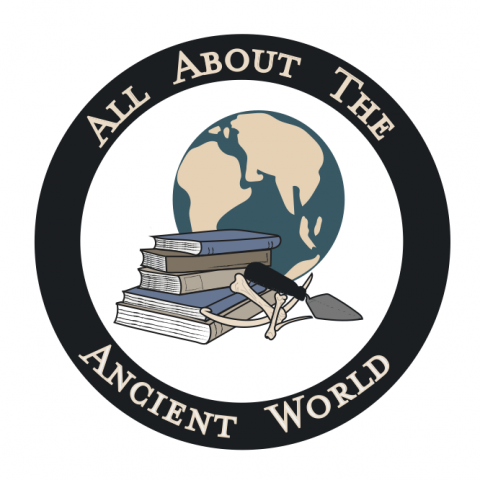
Phaethon: A short film based on fragments from Euripides’ tragedy
With funding from the AnWoMoCo initiative, as well as from the Social Sciences and Humanities Research Council of Canada, and after a two-year delay due to the ongoing pandemic, Dr. Hallie Marshall, Assistant Professor of Theatre Studies at the University of British Columbia, and her students were able to travel back to Greece in May 2022 to complete their work on a filmed version of the only surviving choral ode from Euripides’ fragmentary tragedy Phaethon (fr. 773, 63–109). The short film is part of a larger project that aims to make ancient Greek tragedy in the original language accessible to a broad international audience, while also providing high-quality resources for the teaching of ancient Greek theater.
The 2022 Phaethon film was shot on the island of Naxos, and its imagery engages with both the narrative of the play and the specific poetic images embedded in the ode. As Marshall explains, according to myth, Phaethon was the illegitimate child of the sun god Helios. Upon discovering the identity of his biological father, Phaethon sought out Helios and asked him to affirm his parentage by granting him anything that he asked. His request was to drive the chariot of the sun for a day but, unable to control the horses, Phaethon careened wildly through the sky, in places setting fire to the earth below, until the god Zeus intervened, striking him dead with a thunderbolt. In Euripides’ tragedy, Phaethon’s fateful chariot ride is set at dawn on the day of his wedding.

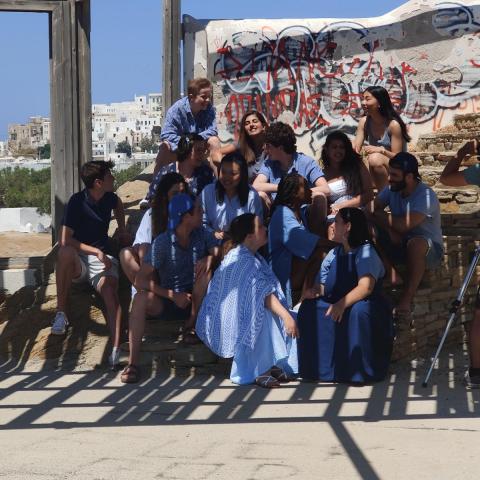
This project was undertaken in collaboration with Barefaced Greek, a group devoted to creating short filmed scenes from ancient Greek plays in the original language and making them freely available on YouTube. A previous collaboration including Marshall, her Go Global Greece students, and Barefaced Greek resulted in a 2018 film of the most famous choral ode to survive from antiquity, the “Ode to Man” from Sophocles’ Antigone. The Phaethon film is expected to be available on YouTube within the next few months, after it has received approval from the Ephorate of Antiquities of the Cyclades and the Greek Ministry of Culture and Sport.
Header Image: Helios drives his sun-chariot as he rises from the sea. Attic Red-Figure Kalyx Krater. ca. 430 BCE. British Museum ©The Trustees of the British Museum.
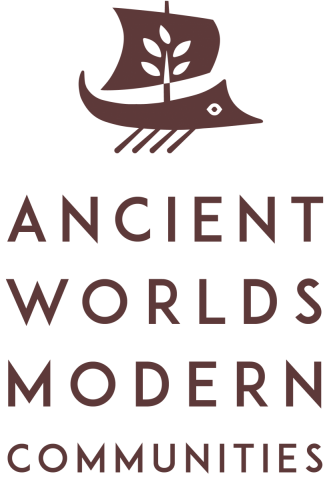
Authors


